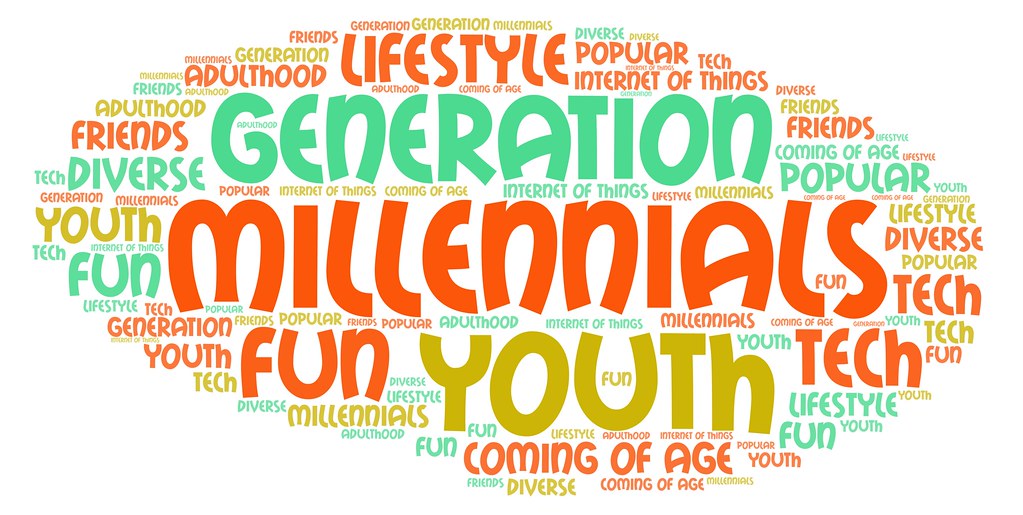You see, the thing with millennials is – they’re at least partially right. Many of the problems that millennials face come down to the simple fact that many of them are forced to suffer through the acid rains of the most recent row of recessions.
For example, buying a house falls into the domain of science fiction for many millennials, while their parents and grandparents could comfortably think about this move between the age of twenty to thirty. (Although to be fair, baby boomers and gen-x’s probably had it a bit rougher than the greatest generation before them.)
That said, it’d be completely blowing it out of proportion if you were to say that it’s downright impossible now to get housing or that millennials are so disadvantaged that they can hardly afford to live on their own.
Well, in this article, we’re about to talk about the most prominent differences between millennials and the previous generations.
Right then, without further ado, here’s the deal.
How Millennials Compare With Generations Before Them
1) Better Education Overall for Millennials (Or Is It?)
During the last 70-ish years or so, education, in general, has seen a complete breakthrough and now is more readily available to the young folk than ever. Now, although education can be accessed by a growing number of people, there are still some things that need to be taken into consideration.
For example, there’s an increasing number of fields that are … well, it’s tough to describe what on Earth are they, let’s put it that way. Whether we’re talking about dubious gender-based majors and bachelor’s degrees, to shady managerial this and managerial that courses, education has become more difficult to pinpoint when it comes to the simple question of what it is.
Therefore, while it is true that millennials are getting more education, in general, (when it comes to the number of students enrolled in various colleges) it’s also important to point out that many of the degrees they get nowadays are completely useless.
2) Women Are More Likely to Get Educated
Not only are more young millennials getting high education in comparison with their grandparents and even parents, but it’s also true that nowadays more women are educated than ever.
In fact, the number of men interested in higher education and college has been steadily decreasing over the years, while women still lead the way when it comes to the number of students enrolled. At the same time, women still don’t choose STEM as much as men, so there is an enormous pool of millennial women out there with degrees such as those in liberal arts, gender studies, and other tough-to-get-employed ‘disciplines’.
3) More Women in the Labor Force
Other than skyrocketing in education past the men, millennial women also represent a bigger chunk of the labour force than they used to. Some charts say that up to 72% of millennial women are actively engaged in the workforce.
One of the biggest reasons this is the case would be the fact that there has emerged a ginormous market of computer-based jobs, where different managers, keyword experts, and social media managing people are high in demand.
So, while you won’t really see plenty of women working on oil rigs or in quarries, you will see plenty of them employed at cubicle-filled offices and similar establishments.
4) Late Marriages
Possibly one of the biggest points of differentiation between the WWII generations and the millennials of today would be the fact that the millennials get married much later in their twenties than their grandparents.
As reasons for these late marriages, millennials tend to claim that the biggest problem is the money, followed by the unwillingness to settle down young, as well as the inability to find someone the like sufficiently, so to speak.
5) More Minorities
If you’ve ever seen a commercial for a bank or any other office space, for that matter, you may have already noticed that it’s full of various minorities. This is because ever since WWII, minorities have been seeing a steady growth of population.
Nowadays, visible minorities represent a larger chunk of the labour force and are disproportionately represented in films and pop culture. Indeed, if you’ve never been to America and didn’t know much about the place, and you saw some films and TV shows that run there nowadays, you’d be convinced that black, Hispanic, and Asian people represent at least 50% of the American population, if not more.
6) Less Millennial Veterans
This stat makes a lot of sense, to be fair because the millennials would have to ‘compete’ with the WWII generation, where a large chunk of people went to war and then obviously came back as veterans.
And while the US did engage in plenty of wars ever since, not as many young soldiers are coming back from Iraq and Afghanistan, because not many went there in the first place.
7) More Millennials Live in Cities
Whether it’s because it’s easier to get employment or it’s a more fun place for a young person, bigger cities are becoming home to an ever-increasing number of millennials. This marks quite a shift from some 70 years ago when the numbers of young people living in cities and in smaller towns and villages were not so drastically different.
Of course, a big reason for this shift in stats would be immigration, which has brought millions of young people in the country. By the way, if you’re looking to emigrate to Australia, you might want to hire the help of migration agents in Sydney. These folks will help you out with everything you need to know.
In Conclusion
All things considered, the differences between millennials and the older generations are quite substantial in some areas and are only becoming deeper as time goes on. Considering the rough economic climate and the crisis in values across the Western world, one can only wish good luck to millennials and hope for the best!


